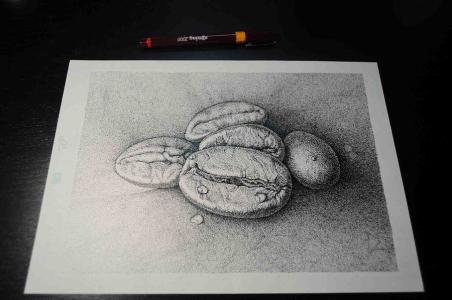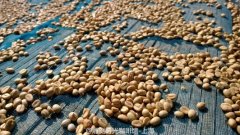A brief introduction to the Origin, Development, History and Culture of Banci Magi Fine Coffee beans with unique style

Bench Maji, located in southwestern Ethiopia and not far from neighboring Sudan, is easy to find using Google map. Banchi Magi Gesha Estate flavor is different from Panamanian Geisha, but it is still worth tasting. It is rare in many sun-dried bean regions in Ethiopia. It is distinguished from other coffee bans by its varied flavor of spices and fruits. It is located in southwest Ethiopia and is not far from neighboring Sudan. Search with Google map and it is easy to find. Although the flavor of Bancimaji Gesha Estate is different from that of Panamanian Geisha, it is still worth tasting. It is rare and changeable spice and fruit flavor in Ethiopia.
The estate is owned by Gashaw Kinfe Desta and is very close to the town of Geisha. The town of Geisha is also the birthplace of the now well-known variety "Geisha", and the Geisha variety is now common in Panama, Costa Rica, Colombia and Guatemala. It is precisely because of the popularity of the Geisha species that it has attracted new attention to the variety Gesha in its hometown. From the coffee harvest, Mr. Gashaw is very careful, picking only fully ripe coffee cherries and drying them on high scaffolding
Banchimaji Bench Maji, located in southwestern Ethiopia and not far from neighboring Sudan, is easy to find using Google map. Although the flavor of Bancimaji Gesha Estate is different from that of Panamanian Geisha, it is still worth tasting. It is rare and changeable spice and fruit flavor in Ethiopia.
Bench Maji, located in southwestern Ethiopia and not far from neighboring Sudan, is easy to find using Google map. Although the flavor of Banchimaji Gesha Estate is different from that of Panamanian Geisha, it is still worth tasting. It is rare in many sun-dried bean regions in Ethiopia, distinguishing it from other coffees for its varied spice and fruit flavor.
The estate is owned by Gashaw Kinfe Desta and is very close to the town of Geisha. The town of Geisha is also the birthplace of the now well-known variety "Geisha", and the Geisha variety is now common in Panama, Costa Rica, Colombia and Guatemala. It is precisely because of the popularity of the Geisha species that it has attracted new attention to the variety Gesha in its hometown. From the coffee harvest, Mr. Gashaw is very careful, picking only fully ripe coffee cherries and drying them on high scaffolding.
The wild taste of Gemma and the wine aroma peculiar to Harald also drive many coffee fans crazy. Ethiopian coffee varies greatly from batch to batch, so pay attention to the batch number when buying, indicating that the taste of two bags of coffee in the same producing area may differ by 108000 li. In addition, Ethiopian coffee is usually harvested earlier, which is different from coffee in many other regions.
Yemen (Yemen) aroma 4 minutes brightness 4 minutes mellow 3 minutes flavor 4.5 points aftertaste 5 points
Suitable for baking: City/Full city is suitable for everything from city to full city. Lighter baking will highlight the sun and spice, while deeper baking will make dark chocolate and smoky taste more intense. It should be noted that because the beans are relatively small and there is a big difference in particle size, we should pay attention to the problem of stuck beans when using a drum roaster.
Yemen is located in the Arabian Peninsula of the Asian continent, across the Red Sea and Africa, generally classified as African beans. When it comes to Yemen, what most people think of directly is Mocha! As a matter of fact, Mocha is a port in Yemen. in the past, almost all the attached coffee was exported from the port of Mocha, and all mocha became synonymous with coffee and has been in use ever since. In fact, the port of Mocha disappeared long ago because of blockage! But because of traditional habits, coffee beans from many other countries (such as dried Ethiopian beans) are still marked with mocha.
There are many spellings of the word mocha, such as Moka, Mocha, Mocca, etc., but Mokha is closest to the original Arabic. There are several famous producing areas in Yemen, such as San'ani, Mattari, Hirazi, Rimy, and Dhamari. These areas produce many high-quality sun beans. Because of the sun treatment, the size of coffee beans is often different, sometimes mixed with corn and other cereals. Also because it is sun beans, so the taste with the feeling of the sun and wild flavor. Generally speaking, Yemeni coffee has a unique character, wild, complex and exciting, especially the charming sour wine and deep dark chocolate taste that many people like, but some people think that Yemeni coffee beans are bitter. Anyway, this is the unique Yemeni coffee bean.
Kenya (Kenya) aroma 4 minutes brightness 4.5 minutes mellow 3.5 points flavor 4.5 points aftertaste 5 points
Suitable for roasting: City/Full City city roasting can show the best sense of balance of Kenyan coffee, as far as possible not to enter the dense second burst zone, otherwise the charming berry aroma and acidity will disappear, it should be noted that Kenya roasted when the color will be darker than other coffee beans, may have shown black between the first and second explosion Therefore, it is suggested that the color of coffee beans should not be used to judge the depth of coffee baking.
At this time last year, we got the beans of Banchi Maggie for the first time, but that time we only airlifted more than 10 kg to China, and our own people drank a few kg, and it was a pity that we didn't get many of the remaining beans. This year, we will introduce this unique style of sun-tanned coffee to share with more friends.
Important Notice :
前街咖啡 FrontStreet Coffee has moved to new addredd:
FrontStreet Coffee Address: 315,Donghua East Road,GuangZhou
Tel:020 38364473
- Prev

The rich taste of Banki Maggie coffee beans flavor aroma characteristics Description
Bench Maji, located in southwest Ethiopia, not far from neighboring Sudan, is easy to find with Google map search. Banki Magi Gesha Estate has a different flavor from Geisha in Panama, but it is still worth tasting. It is rare in Ethiopia's sun-dried bean region. The variety of spices and fruits is very rare. Bannon (
- Next

A brief introduction to the planting market price of Bancimaji boutique coffee beans with full flavor
At this time last year, we got the beans of Banchi Maggie for the first time, but that time we only airlifted more than 10 kg to China, and our own people drank a few kg, and it was a pity that we didn't get many of the remaining beans. This year, we will introduce this unique style of sun-tanned coffee to share with more friends. Bancimaji (Bench Maji), located in southwest Ethiopia, distance
Related
- Detailed explanation of Jadeite planting Land in Panamanian Jadeite Manor introduction to the grading system of Jadeite competitive bidding, Red bid, Green bid and Rose Summer
- Story of Coffee planting in Brenka region of Costa Rica Stonehenge Manor anaerobic heavy honey treatment of flavor mouth
- What's on the barrel of Blue Mountain Coffee beans?
- Can American coffee also pull flowers? How to use hot American style to pull out a good-looking pattern?
- Can you make a cold extract with coffee beans? What is the right proportion for cold-extracted coffee formula?
- Indonesian PWN Gold Mandrine Coffee Origin Features Flavor How to Chong? Mandolin coffee is American.
- A brief introduction to the flavor characteristics of Brazilian yellow bourbon coffee beans
- What is the effect of different water quality on the flavor of cold-extracted coffee? What kind of water is best for brewing coffee?
- Why do you think of Rose Summer whenever you mention Panamanian coffee?
- Introduction to the characteristics of authentic blue mountain coffee bean producing areas? What is the CIB Coffee Authority in Jamaica?

